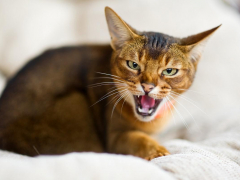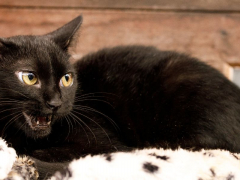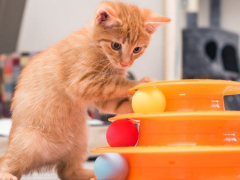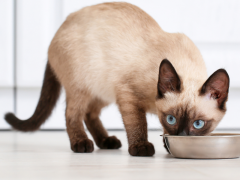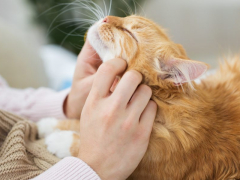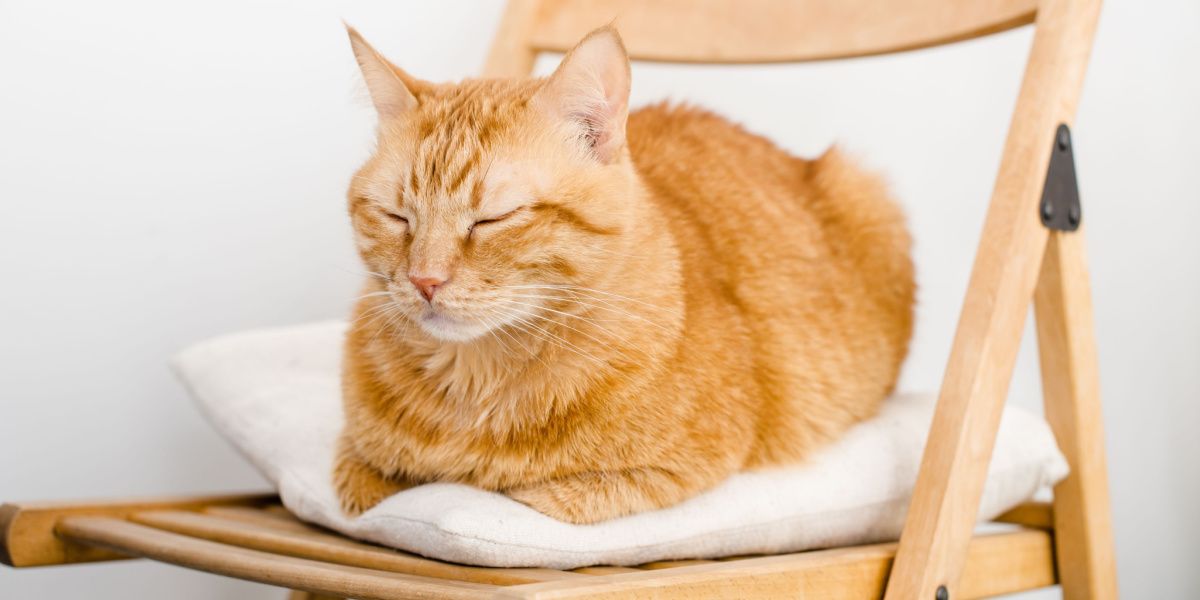
Cats and dogs have very different sleeping styles than humans, often lying in strange positions, or choosing to snuggle up in odd places—like on your head! So why do cats sleep in these ways, such as with their head up?
The way cats sleep can give indications of their mood, alertness level, and even their health. If a cat is sleeping with their head up, they are likely maintaining a level of alertness so they can rouse from sleep straight into action if startled. If your cat suddenly starts sleeping more often with their head elevated or propped up onto something, this might indicate a respiratory problem.Key Takeaways
Cats evolved from solitary wildcats, which needed to keep their wits about them to stay protected. Positions such as those with front paws out or head up, help keep your cat’s body ready to go at any moment.
However, cats can also adapt strange postures to cope with pain, breathing difficulties, or other health concerns, so it’s good to pay attention to your cat’s sleeping positions.
What Do Cat Sleeping Positions Tell Us?
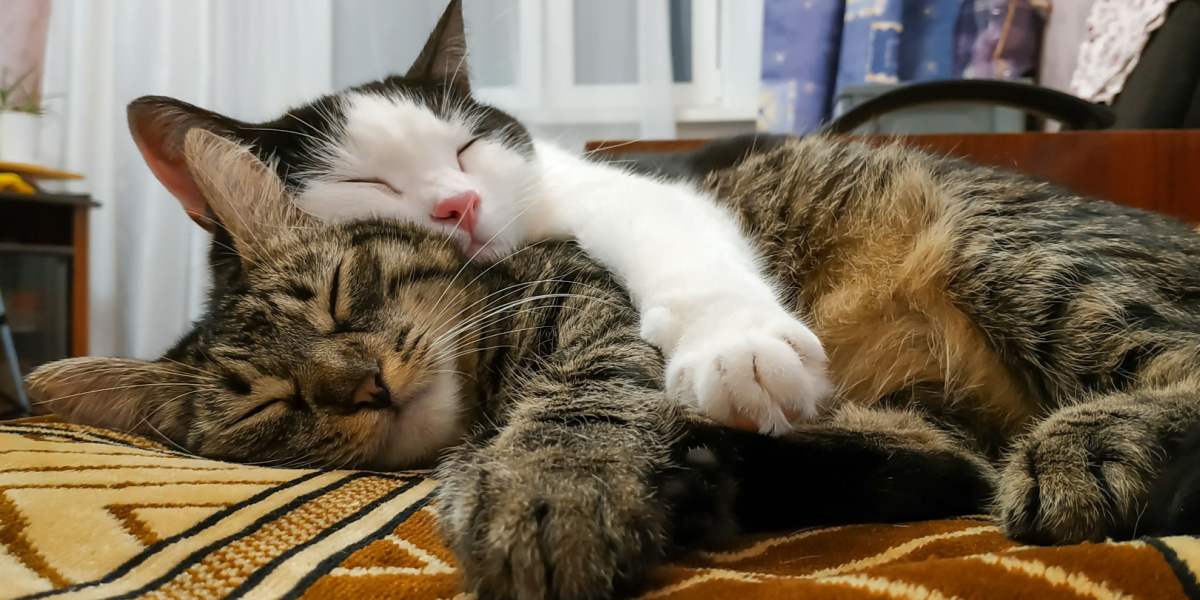
Cats sleep in several different positions, all of which can tell you how your cat is feeling in the moment.
Did you know that the way your cat sleeps can give you an indication of their mood, their alertness level, and even an indication of their health?
Cats are subtle creatures, and paying attention to their signals, such as changes to body language and posture, can give us pet parents some fascinating insights into our cats’ minds. Even the different positions they sleep in can be a message from your cat about whether all is well in their world.
Our domestic cats are descended from their wildcat ancestors, who lived often solitary lives in environments exposed to predators and inhospitable weather. These clever cats adapted well, which is why they can catch some sleep even in the most contortionist position.
Cats have multiple sleeping powers: they can snooze with their eyes open, sleep with all four paws ready to go, and even catnap with their heads up.
Also Read: 8 Most Common Cat Sleeping Positions and What They Really Mean
Common Cat Sleep Positions
Cats sleep in a variety of postures, and each can give us some information on how your cat is feeling. So, what are these varied catnap styles all about?
1. Head Up

Cats can sleep quite comfortably even while holding their heads up.
This position might look uncomfortable, but cats have the ability to stiffen their neck muscles while still maintaining the relaxation needed for sleep. This is a survival instinct, meaning that they can rouse from sleep straight into action if startled, for example by another cat’s meow, or a loud noise.
If your cat is sleeping with their head up, they are likely maintaining a level of alertness, rather than being fully relaxed or in a deep sleep.
Also Read: 11 Tips To Train Your Cat To Sleep All Night
2. Curled Up Tight

The tight ball position is a favorite of cats that are trying to stay warm.
Cats are often found sleeping in a cozy ball. This is an excellent way to conserve body heat, as cats love to be warm. This is a very common position for outdoor cats that need to maintain their body temperature in colder weather. It is also a protective position, as the cat’s vital organs are protected rather than exposed.
Also Read: Why Do Cats Curl Into Balls When Sleeping? A Veterinarian Explains
3. Loaf Position
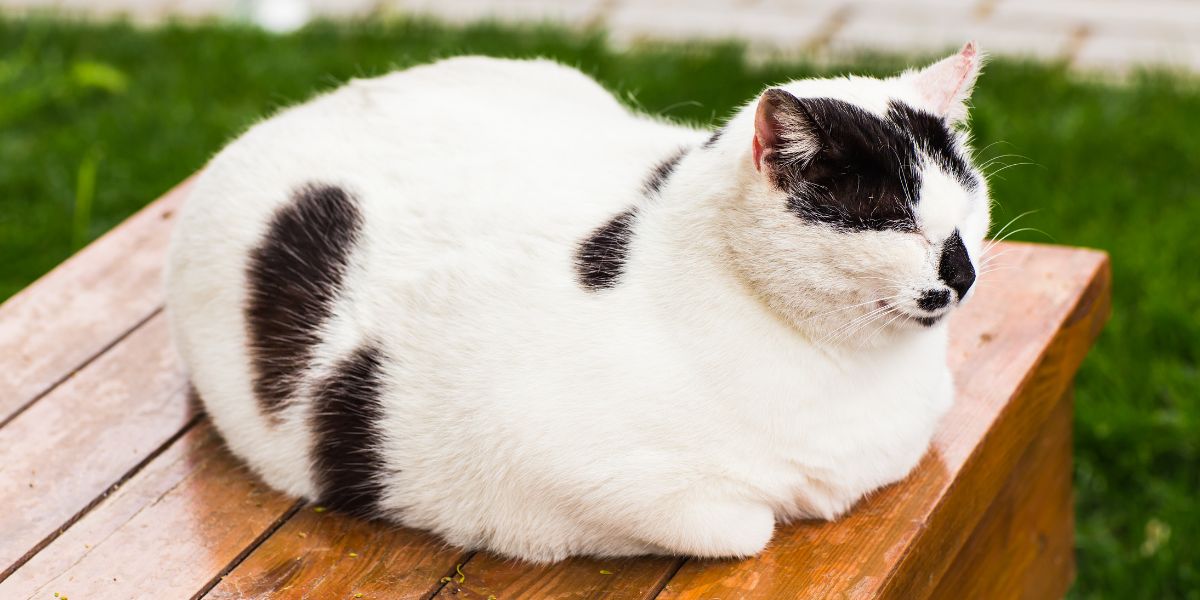
The loaf position allows cats to stay warm and remain ready to spring into action.
Looking just like a loaf of bread, cats sleeping this way have their front paws tucked under their body and their head up. This is another protective position, with the head up and ready, vital organs protected and body heat well conserved.
Also Read: Why Do Cats Sit Like a Loaf?
4. The Superman Position
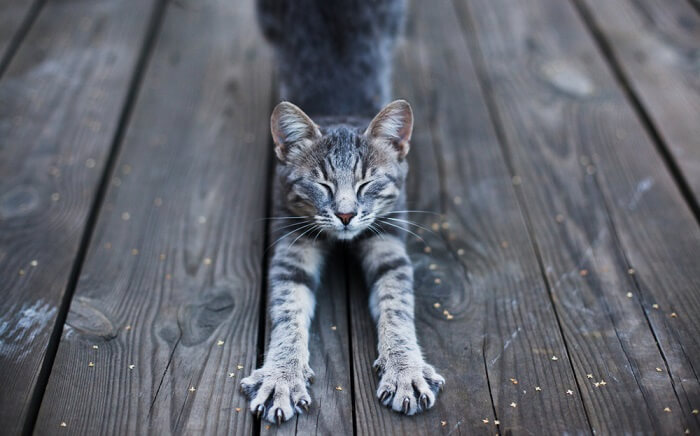
Cats lying with their arms and legs stretched out can quickly be on the move if necessary.
In this pose, cats lie on their tummies with their front legs stretched out in front of them, and their back legs extended behind. This is a good pose to keep them ready for action with all four limbs out, and their exposed length also can help keep them warm in winter when tucked up with a blanket, or cool in summer when stretched out on a cold floor.
Also Read: Why Do Cats Sleep So Much
5. Belly Up

Cats will only relax enough to expose their bellies if they are certain they are safe and protected from harm.
Lying upside down on their backs with their belly exposed is a very vulnerable position for a cat. If your cat sleeps this way, they likely feel very safe and secure in their environment.
Also Read: Why Does My Cat Sleep On My Head?
6. With A Companion
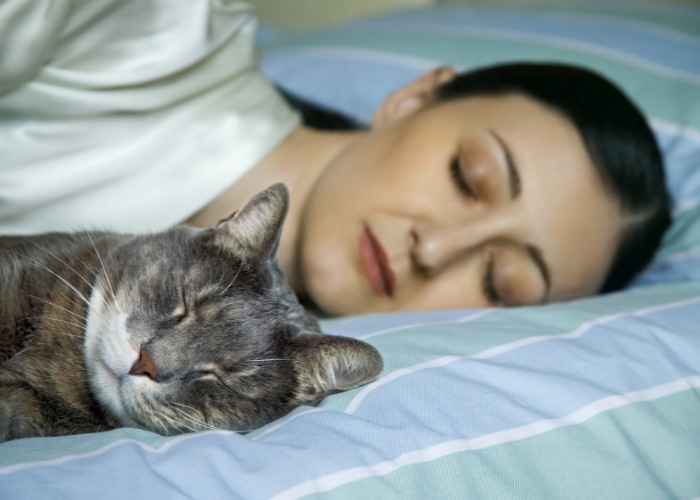
Sleeping with people or other pets is a great way to stay warm and feel safe.
Cats often like to sleep curled up with another pet, or with their chosen human. This is a sign of trust, as cats are at their most vulnerable while sleeping. Having a cuddle is also an excellent way for cats to stay warm as they sleep.
Also Read: Why Does My Cat Not Sleep With Me?
7. In A Box

Enclosed spaces like boxes make cats feel safe while sleeping.
Cats love to feel safe and secure when they sleep, so they might choose an enclosed space to snooze in. They also like to be up high, so that they can keep watch over their environment, which is why it is common to find cats sleeping on places such as windowsills.
However, if your cat is sleeping in their litter box, they might be suffering from a health problem such as urinary disease.
Also Read: Why Do Cats Like Boxes? 8 Reasons Why!
Should I Worry That My Cat Sleeps With Their Head Up?
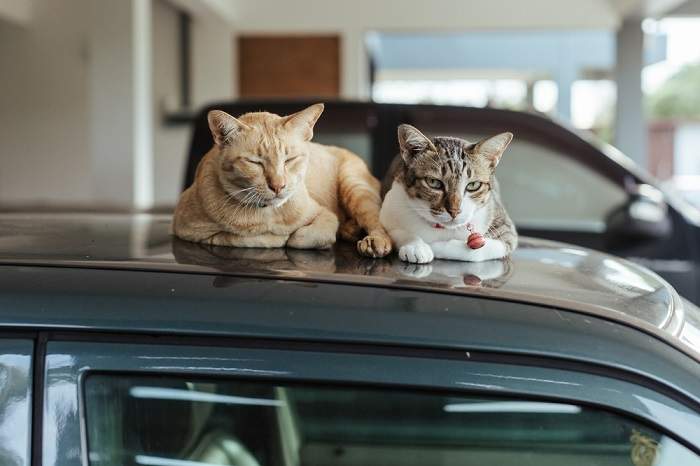
If your cat has always snoozed with their head up, it’s probably normal for them.
In most cases, sleeping in all sorts of weird and wonderful positions is just normal cat behavior. However, there are some signs to watch for that might indicate your cat is not quite right.
If your cat suddenly starts sleeping more with their head elevated, upright, or propped up onto something, this might indicate that they need some support with their breathing. This can occur in cats with respiratory problems, such as cat flu or lung congestion, or heart disease.
By sleeping with their head propped up, they might be trying to open up their airways to improve oxygen flow. Look out for other signs such as rapid breathing even at rest, breathing with their mouth open, or a reduced ability to be active. A cat that is breathing with their mouth open should be seen by a veterinarian urgently as this indicates respiratory distress.
Cats that have started sleeping in a litter tray might be struggling with urinary issues, pain, or discomfort. Likewise, cats that used to jump up somewhere high to sleep and now can’t manage this might have arthritis, or another painful condition limiting their mobility.
Some older cats become agitated about sleeping when showing signs of cognitive decline, such as being unable to settle, being up a lot at night-time, or vocalizing a lot around their bed.
A change to any form of your cat’s behavior, such as their sleeping position, can be a sign that something is wrong. If you are concerned about your cat, book an appointment with your veterinarian.
Also Read: Why Do Cats Sit On Squares?
Cat Sleeping Positions: A Summary
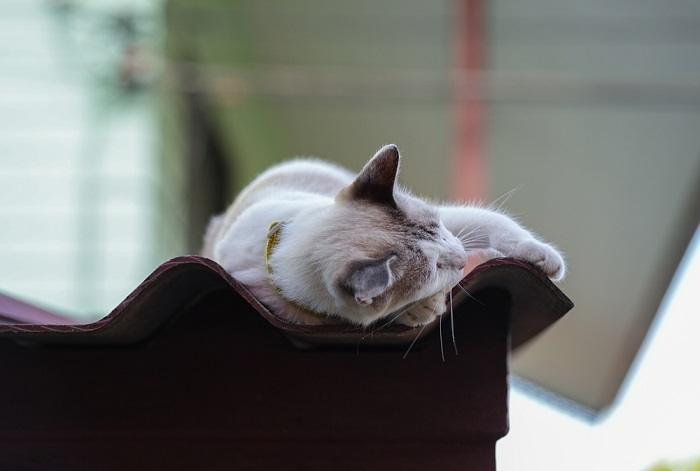
Cats snooze in all sorts of weird and wonderful positions.
Cats snooze in all sorts of weird and wonderful positions. Many of these odd poses serve an evolutionary function, such as protecting vital organs, maintaining readiness to flee if needed, or conserving body heat. Cats can stiffen their neck muscles to keep their heads upright even when sleeping, as a way of remaining alert to danger.
However, cats that always seem to need their heads propped up to sleep might have a health problem such as lung disease and should be checked over by a veterinarian.
Also Read: Why Does My Cat Lay And Sleep Between My Legs?
Frequently Asked Questions
Why do cats sleep with their heads upside down?
Cats sleep in many odd positions. If they have their heads upside down and their paws over their face, this is usually to block out light and keep them warm. It is an exposed position, which shows that they trust you and are feeling very relaxed.
What does it mean when a cat sleeps next to you?
Cats enjoy companionship with people they are bonded to and often sleep next to people that they trust, as they are most vulnerable when sleeping. They also love to stay warm, and you are a convenient heat source!
Does a cat trust you if it sleeps next to you?
Yes, cats usually choose to sleep near, or on, those people they are most bonded to and trust. Cats are vulnerable in sleep, so a cat being relaxed enough near you to snooze is definitely a compliment.
Why do cats put their head on the pillow?
Cats like to be elevated so that they can survey their environment, and having their head upright means that they can maintain a level of alertness whilst resting. They also love their comforts, and many like to be tucked up in a cozy bed.

